(17267 products available)
























































 Ready to Ship
Ready to Ship





























 Ready to Ship
Ready to Ship












































 Ready to Ship
Ready to Ship

















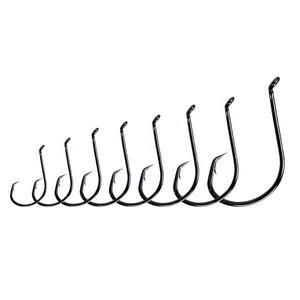
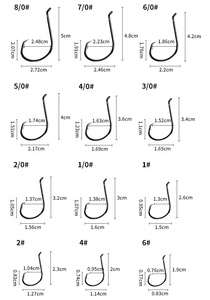
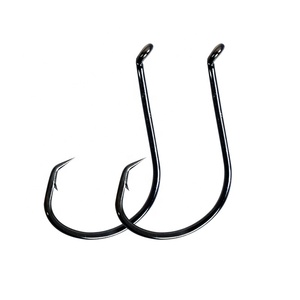
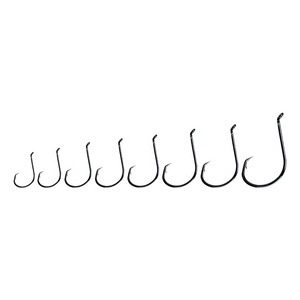
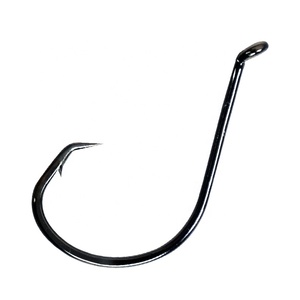
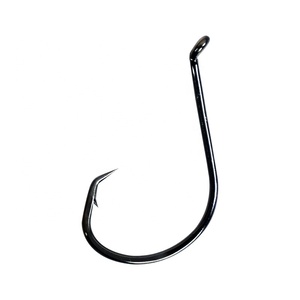






























 Ready to Ship
Ready to Ship






















Some of the most popular types of fish hooks squid are;
J-Style Hook
These are usually found in many hook varieties, including octopus and circles. The design of the J-style hook makes it excellent for various fishing methods, including bottom fishing and trolling. It is usually sharp, and the point is made to pierce the fish's mouth when hooked.
CP Hooks
The C-P squid hook is a new generation of hooks designed to make it easier to catch squid. They are made with a special coating that helps the hook to stay sharp for a long time. Many fishermen love these hooks because they are easy to use and have a high percentage of successful catches.
Circle Hooks
Circle hooks are a popular option among anglers who practice catch-and-release fishing. The hook doesn't penetrate the mouth of the fish easily, making it a safer choice for the fish. It is designed to hook the fish in the corner of the mouth when the angler pulls on the line. This reduces the chance of gut hooking and increases the survival rate of released fish.
Octopus Hooks
This type of hook is well-known for its versatility. It is designed with a slight inward bend in the point, making it easier to hook fish once the angler pulls on the line. It is an excellent option for various fishing methods, including live bait fishing and jigging.
Treble Hooks
This kind of hook has three points that are all joined together. It is usually used in lures, especially for squid. The design of the treble hook increases the chance of a fish getting caught anytime it tries to swim past and comes into contact with one of the points.
Squid fishing hooks are versatile tools used by anglers in various fishing scenarios to target different species of squid. Here are some of the key usage scenarios:
Deep Sea Squid Fishing
Currently, deep-sea squid fishing uses fishing hooks for squid extensively. During this fishing, hook sizes are large enough to handle large squid species. Also, the hooks have barbs that help secure catches by preventing them from slipping off during deep-sea fishing.
Night and Low-Light Conditions
Normally, fishing for squid is commonly done at night or in low-light environments. This is because squids tend to be very active during these times. Anglers use hooks with luminous or glow-in-the-dark features to attract and trigger strikes from squid in these conditions.
Shallow Water and Coastal Areas
Generally, during fishing, some small squid hooks are used in shallow waters and coastal regions. These areas usually experience high-squid activity, making them ideal for fishing. Additionally, the hooks have small sizes, which are suitable for smaller squid species.
Live Bait Fishing
Live bait fishing for squid involves using small fish or other marine creatures as bait to attract squid. This method is particularly effective in scenarios where squid are feeding on similar prey in their natural habitat. However, it requires specialized hooks designed to hold the live bait securely while still being appealing to the squid.
Catch-and-Release Fishing
In this type of fishing, specially designed hooks for squid are used to minimize damage to the squid. This ensures they can survive after being released back into the water. This method is popular among anglers who practice conservation fishing methods.
Commercial Squid Fishing
Sometimes, fishing hooks for squid are used in commercial fishing operations where large quantities of squid are targeted. These hooks are designed for durability and efficiency to withstand the demands of commercial fishing activities.
Knowing the different types of squid fishing hooks and their suitable applications will help buyers choose the right hooks for their customers. For instance, the J hooks are suitable for live bait fishing, while the circle hooks are mostly used for commercial squid fishing.
Hook sizes and gap are important considerations when choosing squid fishing hooks. Small squids require smaller hooks, while large squids will need larger and wider gap hooks. Buyers should also consider that the hooks come in different sizes to accommodate different squid species.
The material of the hook will determine its durability and resistance to corrosion. Stainless steel and carbon steel hooks are popular options since they are strong and can withstand harsh saltwater environments. However, buyers should choose hooks that have a durable anti-rust coating for long-term use.
The hook's point design affects its sharpness and ability to penetrate the squid's skin. Most hooks are either needle-point or beaked-point designs. Needlepoint hooks are sharper and have a faster penetration ability, while beaked-point hooks are more durable and suitable for larger squids. Buyers should choose the right point design that will meet the needs of their customers.
Some fishing hooks squid come with pre-attached lures or bait. While such hooks are convenient, buyers should ensure the hooks have quality lures that are suitable for their target squid species. Alternatively, buyers can get hooks without lures to allow fishermen to use their preferred bait or lure.
The functions, features, and designs of fish hooks for squid are broken down below.
The primary purpose of fishing hooks for squid is to secure the squid once it has grabbed onto the bait or lure. Once the hook penetrates the squid's body, it is challenging for the squid to free itself.
Some fish hooks for squid are designed with multiple points to increase the chances of catching the squid once it is hooked. Other hooks have a unique shape, such as circle hooks, to reduce the likelihood of the squid escaping once caught. Some fish hooks for squid also have a wide gap to accommodate different sizes of squid.
Q1: Do fish notice the color of the hooks?
A1: In some instances, fish can recognize colors; therefore, the hue of the hook can have an effect on whether one gets a bite or not. Nonetheless, the tint of the hook is less significant compared to other aspects such as its sharpness and invisibility.
Q2: How can one tell if a fishing hook is sharp?
A2: To determine if a fish hook is sharp, run your fingernail along the point. If it slides in easily, the hook is dull. A sharp hook will prick or tear your skin. Alternatively, try piercing a piece of paper with the hook; a sharp hook will go through it easily.
Q3: What is the hook size for fishing?
A3: There is no universal hook size. The appropriate hook size for fishing varies based on the fish species, bait, and fishing technique. For instance, smaller hooks are ideal for panfish, while larger hooks suit species like bass and pike. As a general guideline, use proportionately larger hooks for larger fish.
Q4: What is the most common hook for fishing?
A4: Fish hook sizes vary and are designed for different fishing applications. However, the most popular among anglers is the offset shank hook. This is because it is suitable for various fishing applications, from freshwater to saltwater fishing.